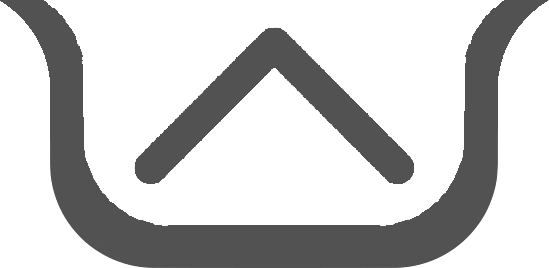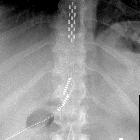medical devices in the abdomen and pelvis

Artificial
urethral sphincters • Artificial urethral sphincter - Ganzer Fall bei Radiopaedia

Medical
devices in the abdomen and pelvis • Multiple urinary catheters in the bladder - Ganzer Fall bei Radiopaedia

Medical
devices in the abdomen and pelvis • Gastrostomy button - Ganzer Fall bei Radiopaedia

Medical
devices in the abdomen and pelvis • Suprapubic catheter stuck in the urethra - Ganzer Fall bei Radiopaedia

Medical
devices in the abdomen and pelvis • Renal transplant - Ganzer Fall bei Radiopaedia

Medical
devices in the abdomen and pelvis • Fetal monitoring equipment - Ganzer Fall bei Radiopaedia

Medical
devices in the abdomen and pelvis • Upper GI tract manometry probe - Ganzer Fall bei Radiopaedia

Capsule
endoscopy • Small bowel patency capsule - Ganzer Fall bei Radiopaedia

Spinal cord
stimulator • Spinal cord stimulator pulse generator (x-ray) - Ganzer Fall bei Radiopaedia

Small bowel
obstruction • Migrated gastric balloon - Ganzer Fall bei Radiopaedia

Medical
devices in the abdomen and pelvis • Menstrual cup device - Ganzer Fall bei Radiopaedia

Medical
devices in the abdomen and pelvis • Common bile duct metallic stent - Ganzer Fall bei Radiopaedia

Medical
devices in the abdomen and pelvis • Double pigtail gastrocystic stent - Ganzer Fall bei Radiopaedia

Medical
devices in the abdomen and pelvis • Peritoneal dialysis catheter - Ganzer Fall bei Radiopaedia

Medical
devices in the abdomen and pelvis • Menstrual cup device - Ganzer Fall bei Radiopaedia

Intrauterine
contraceptive device • Intrauterine contraceptive device - Lippes Loop - Ganzer Fall bei Radiopaedia

Medical
devices in the abdomen and pelvis • Gastric pacemaker for gastroparesis - Ganzer Fall bei Radiopaedia

Medical
devices in the abdomen and pelvis • Sacral nerve stimulator - Ganzer Fall bei Radiopaedia

Medical
devices in the abdomen and pelvis • Colonic self-expandable metal stent - Ganzer Fall bei Radiopaedia

Medical
devices in the abdomen and pelvis • Over-The-Scope-Clip (OTSC) - Ganzer Fall bei Radiopaedia

Medical
devices in the abdomen and pelvis • Broken jejunostomy catheter - Ganzer Fall bei Radiopaedia

Medical
devices in the abdomen and pelvis • Colonic manometry probe - Ganzer Fall bei Radiopaedia

Medical
devices in the abdomen and pelvis • Double-lumen nasogastric-jejunal tube - Ganzer Fall bei Radiopaedia

Medical
devices in the abdomen and pelvis • Sacral nerve neurostimulator - Ganzer Fall bei Radiopaedia

Medical
devices in the abdomen and pelvis • Duodenal-jejunal bypass sleeve device - Ganzer Fall bei Radiopaedia

Medical
devices in the abdomen and pelvis • Insulin pump - Ganzer Fall bei Radiopaedia

Medical
devices in the abdomen and pelvis • Baclofen pump - Ganzer Fall bei Radiopaedia

Medical
devices in the abdomen and pelvis • Dislodged mesh repair of rectocele - Ganzer Fall bei Radiopaedia

Medical
devices in the abdomen and pelvis • Plastic biliary stent - Ganzer Fall bei Radiopaedia


Medical
devices in the abdomen and pelvis • Malecot tube - Ganzer Fall bei Radiopaedia

Inferior vena
cava filter • Mobin-Uddin umbrella filter - Ganzer Fall bei Radiopaedia

Medical
devices in the abdomen and pelvis • Displaced peritoneal dialysis catheter - Ganzer Fall bei Radiopaedia

Cholangiocarcinoma
• Biliary stenting - lower CBD cholangiocarcinoma - Ganzer Fall bei Radiopaedia

Medical
devices in the abdomen and pelvis • Splenic embolization coils - Ganzer Fall bei Radiopaedia

Penile
implant • Penile implant - Ganzer Fall bei Radiopaedia

Vaginal
pessary • Vaginal cube pessary - Ganzer Fall bei Radiopaedia

Inferior vena
cava filter • Inferior vena cava filter - Ganzer Fall bei Radiopaedia

Intrauterine
contraceptive device • Extrauterine migration of Lippes loop - Ganzer Fall bei Radiopaedia

Medical
devices in the abdomen and pelvis • Carcinoma cervix - brachytherapy applicator - Ganzer Fall bei Radiopaedia

Gastric band
• Gastric band - Ganzer Fall bei Radiopaedia

Medical
devices in the abdomen and pelvis • Slipped laparoscopic gastric band - Ganzer Fall bei Radiopaedia

Intrauterine
contraceptive device • Intrauterine contraceptive device - Ganzer Fall bei Radiopaedia

Medical
devices in the abdomen and pelvis • Displaced balloon device in post-prostatectomy urinary incontinence - Ganzer Fall bei Radiopaedia

Uterine
leiomyoma • Uterine leiomyomas - Ganzer Fall bei Radiopaedia

Medical
devices in the abdomen and pelvis • Hulka clips - Ganzer Fall bei Radiopaedia

Renal artery
stenosis • Stenting of a renal artery stenosis - Ganzer Fall bei Radiopaedia

Gossypiboma
• Gossypiboma - Ganzer Fall bei Radiopaedia

Medical
devices in the abdomen and pelvis • HeRO catheter - Ganzer Fall bei Radiopaedia

Penile
implant • Penile implant - Ganzer Fall bei Radiopaedia

Vaginal
pessary • Vaginal ring pessary - Ganzer Fall bei Radiopaedia

Ureteric
stent • Ureteric stent - Ganzer Fall bei Radiopaedia

Gossypiboma
• Gossypiboma - Ganzer Fall bei Radiopaedia

Medical
devices in the abdomen and pelvis • Hernial mesh - Ganzer Fall bei Radiopaedia

Medical
devices in the abdomen and pelvis • Retained retractor - Ganzer Fall bei Radiopaedia

Medical
devices in the abdomen and pelvis • Gastric pacemaker - Ganzer Fall bei Radiopaedia

Vertebroplasty
& Kyphoplasty • Capsule endoscopy and IVC filter on abdominal x-ray - Ganzer Fall bei Radiopaedia

Vaginal
pessary • Vaginal ring pessary - Ganzer Fall bei Radiopaedia

Medical
devices in the abdomen and pelvis • ESSURE sterilization device - Ganzer Fall bei Radiopaedia

Medical
devices in the abdomen and pelvis • Tampon - Ganzer Fall bei Radiopaedia

Medical
devices in the abdomen and pelvis • Sacral interstim, wireless Bravo pH probe and Sitz markers - Ganzer Fall bei Radiopaedia

Medical
devices in the abdomen and pelvis • Endo clip or hemo clip - Ganzer Fall bei Radiopaedia


Capsule
endoscopy • Patency capsule - Ganzer Fall bei Radiopaedia
Medical devices in the abdomen and pelvis are important to be recognized, just like medical devices of the chest. Often we ignore these devices, considering them to be incidental and non-pathological, however it is essential to be aware of potential complications.
Gastrointestinal tubes
- stomach tubes: nasogastric / Ryle tube, feeding tube.
- intestinal tubes: nasojejunal feeding tube, Millor-Abbot tube (not used now), enteroclysis tube, gel pump tube (Parkinson), manometry tube, duodenal-jejunal bypass sleeve device (EndoBarrier)
- gastrostomy tube, gastrostomy button, Malecot tube
- jejunostomy tube
- gastric lap band
- gastric balloon
Genitourinary devices
- ureteric stent/ureteral stent: double 'J' stent
- metallic ureteric stent
- urethral stent
- bladder neck stent
- artificial urinary sphincter
- artificial urethral sphincter
- Foley catheter
- suprapubic catheter
- nephrostomy tube, e.g. angiographic catheters, pigtail catheter, Malecot catheter
- contraceptive devices, e.g. IUCD (e.g. Copper-T, Mirena), Norplant, vaginal ring
- tubal ligation devices, Essure device
- vasectomy devices
- pessaries
- penile prostheses
- tandem and ovoid implants for gynecologic brachytherapy
- tampons
- menstrual cup
- sacral nerve stimulator
Post-operative devices
- surgical sutures, staples, clips, and glue
- surgical sponges
- most common retained surgical foreign body is a laparotomy cotton sponge
- it can be easily identified on radiographs by a 'ribbon-like' characteristic marker (see: gossypiboma)
- surgical needles, ties
- surgical drains, e.g. closed-wound suction drains, gravity drains, sump drains
- biliary drains and stents: T-tube, biliary stent (e.g. Cook stent)
- metallic stents: vascular stents, self-expandable metallic stents (SEMS)
- embolization coils
- endo clip or hemo clip
- Ovesco device
- IVC filters
- vascular grafts, e.g. aortobi-iliac bypass grafts
- haemodialysis reliable output (HeRO) catheters
Miscellaneous
- foreign bodies
- medications ingested by the patient - potassium chloride, antacids (e.g. Pepto-Bismol, magnesium salts), iron tablets, vitamin pills, barium and iodinated contrasts
- residual medication injected into soft tissues e.g. bismuth (historically used for syphilis) in the buttocks
- calcified injection sites in the soft tissue, most commonly buttocks in diabetics
- radiopaque markers, as used in a shapes/colon transit study for evaluation of patients with chronic constipation (e.g. Sitz markers)
- capsule endoscopy devices
- patient restraint devices
- colostomy bags
- bowel biopsy devices
- fetal monitoring equipment
- residual contrast
- vertebral fixation screws
- vertebroplasty/kyphoplasty related
- hernia mesh, e.g. tantalum mesh
- umbilical arterial and venous catheters
- dialysis catheters
- ascites drains
- chemotherapy-infusion pumps
- insulin pumps
- gastric pacemaker
- femoral central venous catheters
- ECMO arterial or venous catheters
- ventriculoperitoneal catheters
- sacral stimulators e.g. InterStim
- antibiotic-impregnated beads
- brachytherapy seeds in the prostate
See also
- medical devices of chest
- medical devices of the neck
- rectal foreign bodies
Siehe auch:
- Fremdmaterial im Röntgenbild des Thorax
- thorakale Implantate / Devices
- Fremdkörper in Anus und Rektum
- Intrauterinpessar
- abdominelle Fremdkörper
- Gossypibom
- Undine-Syndrome
- Vertebroplastie
- Vaginalpessar
- Rückenmarkstimulation
- sakraler Neurostimulator
- Schmerzpumpe
- abdomineller Schrittmacher
- ureteral stents
und weiter:

 Assoziationen und Differentialdiagnosen zu abdominelle Implantate und Devices:
Assoziationen und Differentialdiagnosen zu abdominelle Implantate und Devices:










